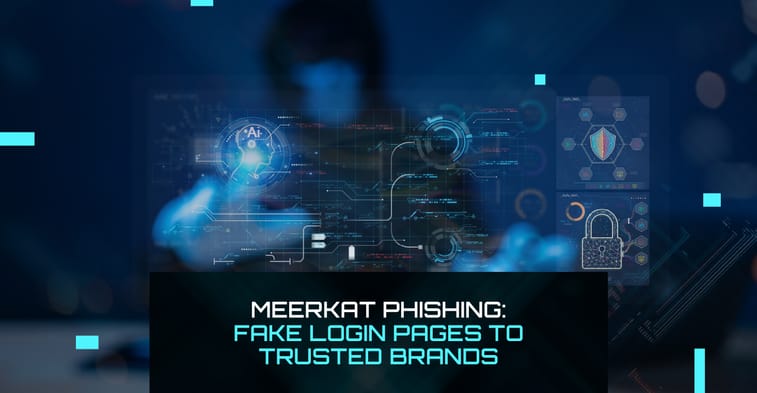
When the interface becomes the attack surface
Three recent campaigns (Tsundere, Matrix Push C2, and Sturnus) show attackers shifting command-and-control and data theft into places we treat as harmless UX plumbing.
Read More
There are always new forms of phishing attacks to add to your cybersecurity awareness programmes. They’re the thorn in the side of all internet users; but the emergence of phishing-as-a-service (PhaaS) is pushing the potential dangers of phishing to new levels.
Recently, researchers have discovered a new Morphing Meerkat phishing kit that has been dynamically spoofing the login pages of more than 100 brands. The pages are highly effective, capable of deceiving people who have a solid understanding of the risks of phishing online.
It’s a comprehensive phishing service that enables threat actors to execute targeted attacks very easily. The kit leverages victims’ domain name system (DNS) and mail exchange (MX) records to identify their email service provider and serve a fake login page that looks like the real one.
So the login pages don’t just look authentic – they’re also delivered in a way that feels legitimate to cyber-savvy internet users.
Like many phishing attempts, a Morphing Meerkat attack starts with initial contact; the victim receives a phishing email which contains a link.
When they click that link they’re taken through a series of redirects that exploit vulnerabilities in ad tech infrastructure or compromised domains – effectively evading detection.
The phishing kit queries the MX records of the victim’s email domain, which allows it to identify the email service provider and deliver a customised fake login page.
And then the victim, satisfied that everything looks legitimate, enters their credentials to login to the trusted site. That information is exfiltrated to the threat actors through channels including email, AJAZ requests, or PHP scripts.
Morphing Meerkat then redirects the victim to the brand’s legitimate login page – so they just think they entered their credentials incorrectly, and they don’t realise anything nefarious has happened at all.
Phishing is no new trick. But Morphing Meerkat stands out in a number of ways:
Morphing Meerkat is an alarming example of how sophisticated and convincing phishing attacks can be. And as time goes on, advancements in phishing strategies will continue.
Cybersecurity awareness programs must include education around hard-to-spot PhaaS attacks:
Most importantly, all organisations (and ideally all internet users) need to pay attention to developments in phishing tactics and commit to continuous cybersecurity learning. Malicious strategies are changing all the time, so the only way to stay safe is to stay curious: learn from new research about the latest threats, and understand the methods that might be deployed against you.
Join us at Black Hat MEA 2025 to share your perspective and meet potential partners – and shape the future together.
Join the newsletter to receive the latest updates in your inbox.

Three recent campaigns (Tsundere, Matrix Push C2, and Sturnus) show attackers shifting command-and-control and data theft into places we treat as harmless UX plumbing.
Read More
CFOs say they’re confident in their organisation’s ability to handle cyber risk – and more than half plan to outsource cybersecurity expertise.
Read More
From fake celebrity endorsements to cloned voices in mobile scams, 2025 proved that deepfakes are now a real business and consumer risk.
Read More